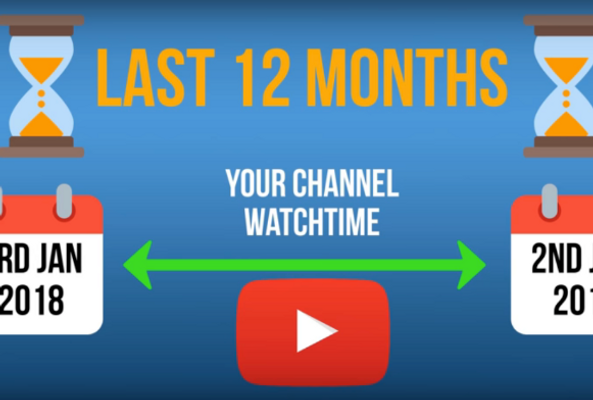Lydia Sweatt is a writer who loves balancing her article/blog time indoors with a healthy dose of nature. She bikes, hikes, and identifies edible plants along the way.
YouTube Monetization: Which Videos Count Toward 4,000 Hours of Watch Time?
Earning 4,000 hours of Watch Time is the dream for most creators, but it isn’t easy. Gaining 100 hours, sure. But thousands? That’ll test your determination to keep going on YouTube. Essentially, you have to post multiple videos and hope people watch them for long enough.
But once you have 4,000 hours, everything gets easier. You’ll be one step closer to applying to the YouTube Partner Program, which lets you monetize your channel with advertisements. Having those valuable hours allows you to focus on other things, too, like getting 1,000 subscribers. That’s the second requirement for earning ad revenue.
Read More: YouTube Partner Program – How to Monetize Your Channel
Stop Guessing. Start Growing.
Join 20M+ creators using vidIQ to get more views, subscribers, and success on YouTube.
When you’re collecting watch time hours, it’s easy to overlook certain parts of the process. The biggest, most understated part, is that not all watch hours count toward the YPP threshold.
These 5 Videos Aren’t Eligible for YPP Watch Time
Before you start earning watch time, know which videos are in your best interest to create. There are five videos that make it hard — in most cases, impossible — to reach 4,000 hours.
1. Videos Set to Private or Unlisted
Years ago, private and unlisted videos counted toward YPP watch time. That changed in 2019 when YouTube decided that public videos, not partially viewable content, could accumulate watch hours.
This means you need to prioritize public videos over private or unlisted ones. Unlisted videos can only be watched if certain people have the link. This privacy option benefits creators with specific content plans. They may want to send videos to friends and family or create a webinar for a limited audience.
But if you’re trying to monetize your channel, unlisted and private videos aren’t helpful. Make sure videos that need to be public are, in fact, set to public. That’ll help you reach 4,000 hours and apply to the YPP.
How to set private or unlisted videos to public on YouTube
1. Go to the YouTube Studio.

2. Click Content on the left navigation menu.

3. Find the video you want to make public, then go to the Visibility column. Click the eyeball symbol to reveal a menu of options: private, unlisted, members only, and public. Choose Public, and then click Publish.

2. Videos You’ve Deleted
When you delete content, YouTube deducts the watch time from your total count. For example, imagine your channel has 2,000 watch hours. If you delete a video that contributed 500 of those hours, you’ll be left with 1,500. Before you delete anything, check to see how many watch hours your content has earned.
Sometimes deleting a video is inevitable. Maybe you’ve grown as a person since it was first published and want to clean up your image. Or perhaps someone appeared in your video without prior consent, and they want you to take it down. Whatever the reason, make sure it’s worth deleting a video and losing precious watch hours.
3. Advertising Campaigns
Have you created video ads for YouTube? If you were hoping these would help you apply to the YPP, unfortunately, they won’t. Watch hours from advertising campaigns don’t count toward YouTube monetization. Even if you’ve earned 10,000 hours, none of it will go toward the 4,000 hours you need.
This seems fair because ads can get millions of views. If YouTube counts them for YPP acceptance, that’ll create a shortcut to monetization.
4. YouTube Shorts
Watch time from Shorts does not contribute to a creator’s 4,000-hour goal, so rely on long-form videos when you're racking up those hours!
5. Unconverted Live Streams
Live streams are a great way to increase your watch time. These videos are usually lengthy, and if people stick around until the end, you can add several hours to your overall count.
According to YouTube, live streams that aren’t converted to video-on-demand content won’t earn YPP watch hours. The information around this is pretty vague, so we'd suggest making sure your live streams are public when they've ended. Don't archive a live stream by setting it to unlisted or private.
Just to be sure, we asked YouTube if this advice made sense for creators.

We didn't get a straightforward answer, but creators chimed in with their personal experience. A few of them said they earn watch time both during and after a live stream, which includes video-on-demand viewing.
Whether these hours were recorded for YPP watch time is another story. That's why, as soon as possible, we'd recommend checking to see if your live stream is public after it ends. If it's unlisted or private, switch it to public.
How to Get 4,000 Hours of YouTube Watch Time
To reach 4,000 hours of watch time, create a diverse set of content. Be intentional with the videos you upload, and go for quality over quantity. Once you've covered those areas, the six tips above will help you maximize your watch hours.
Read More: Make Money on YouTube – How to Get 4000 Hours Watch Time
But don’t stop there. Your next goal should be applying to the YPP, which you can learn how to do right here!
20k+ 5 Star Reviews
Ready to put this into action?
Use vidIQ to find your next video idea, pick better keywords, and optimize every upload.






